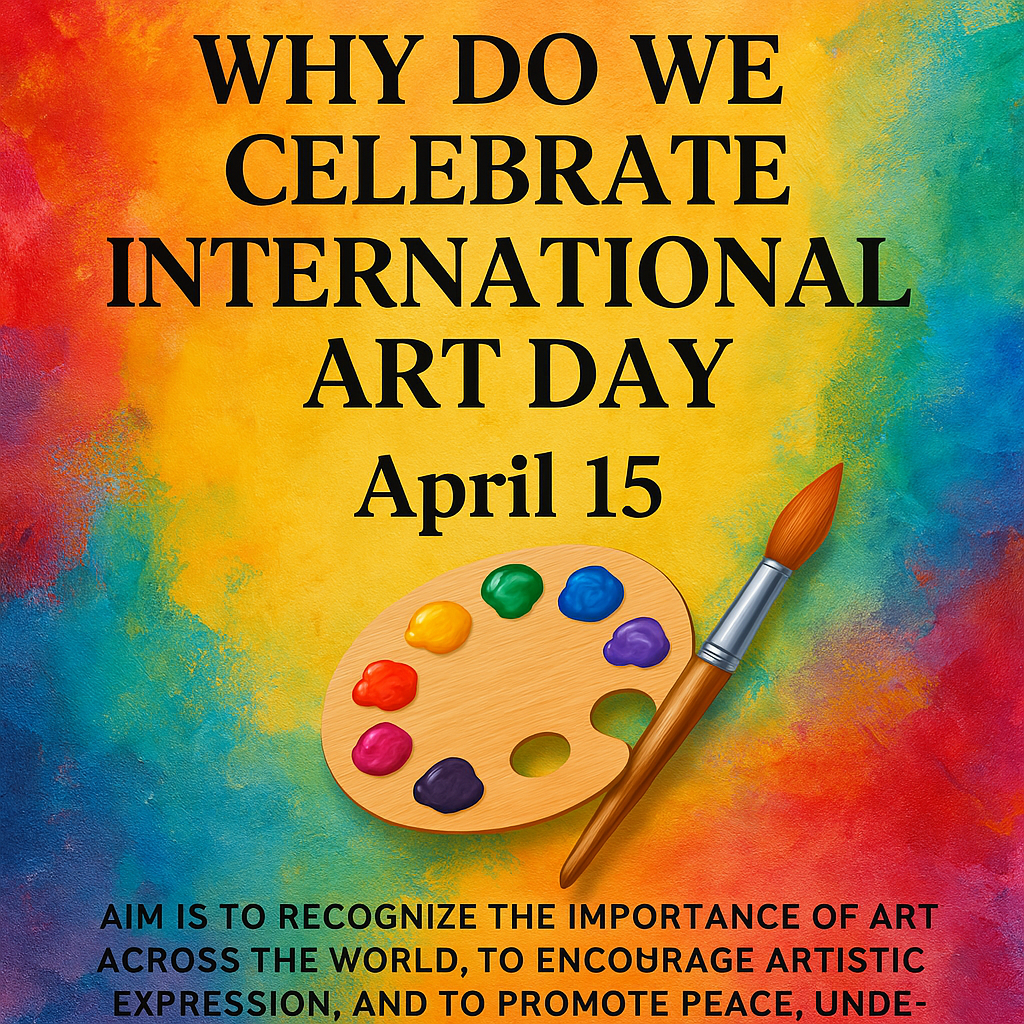International Art Day, celebrated every year on April 15, is a tribute to the creative spirit that unites humanity beyond boundaries. It is a global celebration that highlights the importance of art in promoting peace, understanding, and cultural exchange through creative expression.
Why April 15?
This date was chosen to honor the birth anniversary of Leonardo da Vinci – a true Renaissance man. Da Vinci was not just a painter but also a sculptor, architect, engineer, scientist, and philosopher. His life and works symbolize the limitless nature of human creativity and the profound connection between art and intellect. Through him, we’re reminded that art is not just about aesthetics – it is a path to discovery, knowledge, and the evolution of civilization.
Objectives of Celebrating International Art Day
The celebration is more than symbolic—it’s a call to action. It serves to:
- Spread social awareness through art
- Provide a platform for local and global artists
- Promote art education and creativity
- Preserve culture and tradition through artistic expression
- Enhance beauty, emotion, and sensitivity in everyday life
From workshops and exhibitions to painting competitions and cultural discussions, institutions worldwide come alive on this day to celebrate the artistic soul of society.
India’s Role in Global Art Heritage
India, with its centuries-old traditions and visually rich heritage, has a major role to play in this global celebration. Indian art, with its diversity and depth, offers profound insights into regional cultures, spiritual beliefs, and everyday life.
To understand Indian art, it can be broadly categorized into five key traditions, each encompassing vibrant folk and tribal art forms. Here’s a look at them:
1. RURAL FOLK ART
Rooted in village traditions, rural folk art captures the essence of daily life, festivals, rituals, and local legends.
Major Art Forms:
- Madhubani (Bihar)
- Pattachitra (Odisha & West Bengal)
- Phad Painting (Rajasthan)
- Pithora (Gujarat / Madhya Pradesh)
- Sanjhna Art (Northern India)
2. TRIBAL ART
Tribal art reflects the spiritual connection between nature and indigenous communities, showcasing their myths, rituals, and customs.
Major Art Forms:
- Gond (Madhya Pradesh)
- Warli (Maharashtra)
- Sohrai & Khovar (Jharkhand)
- Bhil Art (Madhya Pradesh)
- Kurumba Art (Tamil Nadu)
3. WALL & MURAL ART
Often seen in homes and temples, these artworks are an intrinsic part of celebrations, religious rituals, and aesthetic decoration.
Major Art Forms:
- Chetar Painting (Jharkhand)
- Aripana / Kolam / Alpana (Southern & Eastern India)
- Mithila Wall Art (Bihar)
- Dewar Painting (Chhattisgarh)
4. SPIRITUAL & MYTHOLOGICAL ART
Drawing inspiration from religious stories and ancient epics, these styles often depict gods, goddesses, and symbolic narratives.
Major Art Forms:
- Kalamkari (Andhra Pradesh)
- Cheriyal Scrolls (Telangana)
- Paudi Painting (Himachal Pradesh)
- Thangka (Ladakh / Himalayan Region)
5. TEXTILE & CRAFT-BASED ART
These art forms are deeply integrated into daily life, often appearing on fabrics, crafts, and household items.
Major Art Forms:
- Matano Patola (Gujarat)
- Kantha (West Bengal)
- Phulkari (Punjab)
- Rogan Art (Gujarat)
- Bagh Painting (Odisha)
Final Thought
On this International Art Day, let us not only celebrate creativity but also honor the rich tapestry of Indian folk and tribal art. These forms are more than cultural legacies—they are living, breathing stories of our roots, values, and identities.
If you’re curious to explore more or support Indian folk art, feel free to reach out. Let’s keep the soul of art alive, together.
Warm regards,
Vidisha Pandey
Artist | Curator | Founder – Indian Folk Art Corridor & Vidisha’s Creations

